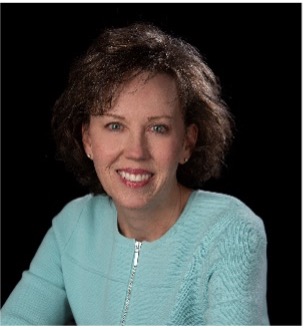
Hello! I’m Andrea Nelson Trice, an independent evaluation consultant as well as a Senior Fellow with the Sagamore Institute. I spent part of my childhood living in the Peruvian rainforest and that experience shaped my life’s work. For over two decades, I have conducted research on cross-cultural dynamics and have just completed a book project that included interviews with 90 people from around the globe who work in international development.
As I listened to individuals from the Majority World, they mentioned several factors that they believe hinder Americans’ ability to be culturally responsive in their work, including:

- Americans often work at a distance from the people they seek to help Proximity Restoration Empowerment
“They live on a hill with big SUVs. I don’t know how they get to know what they need to learn by not living on the ground.” – Ugandan social entrepreneur
- Americans frequently emphasize technological innovation over restoration
“The minute you bring in something from the outside, we ask why.” – Ghanaian social entrepreneur
“Use the skills I already have and use my basic technology and my basic need to uplift, to make me better.” – Zimbabwean social entrepreneur
- Americans tend to focus on addressing a material problem rather than empowering individuals and communities.
“Don’t be content with just giving services. Empower people in the community to give the services themselves.” – Kenyan leader of an NGO
As evaluators, I believe we have a responsibility not only to measure a project’s positive and negative impact, but also to ask important questions about the assumptions that initially shaped project goals. For example, what do project leaders believe needs to change within the community? What do they believe should stay the same? How have cultural norms shaped these beliefs?
Evaluating international projects in a culturally responsive way requires understanding how Americans’ cultural norms differ from the local culture. The following resources offer important insights for those who have never studied American culture in any systematic way.
Rad Resources:
Geert Hofstede’s extensive work on cultural differences
Build Strong, Build Together: Creating Social Enterprises That Truly Transform (Upcoming August 2021)
The American Evaluation Association is celebrating International and Cross-Cultural (ICCE) TIG Week with our colleagues in the International and Cross-Cultural Topical Interest Group. The contributions all this week to aea365 come from our ICCE TIG members. Do you have questions, concerns, kudos, or content to extend this aea365 contribution? Please add them in the comments section for this post on the aea365 webpage so that we may enrich our community of practice. Would you like to submit an aea365 Tip? Please send a note of interest to aea365@eval.org. aea365 is sponsored by the American Evaluation Association and provides a Tip-a-Day by and for evaluators. The views and opinions expressed on the AEA365 blog are solely those of the original authors and other contributors. These views and opinions do not necessarily represent those of the American Evaluation Association, and/or any/all contributors to this site.

Hi Andrea,
I am working on my Professional Master of Education through Queen’s University and am currently taking a course on program inquiry and evaluation.
As part of the course, I am evaluating a social program at the high school I work which aims to help students transition from elementary school to high school. Because I work at the school, I know a lot about the program, the school’s culture, and how the two intertwine. However, as I complete my course work, I can’t help but wonder how my perspective and the resulting evaluation might differ if I was more of an outsider to the school culture. I think about this even more due to my mixed-race background where navigating the needs and expectations of two different groups can be challenging at times.
For these reasons, your comment about how Americans focus on material problems rather than empowering others resonated with me. Rather than telling people what they need, I am a firm believer in having open dialogue to find out what they know they need and then fining ways to help them achieve it. This is particularly important when working with someone from a different culture than our own because of the differences between the cultures. Hofstede’s 6-D model makes this visible.
I can imagine that balancing the needs of the project leaders and participants with outside organizations who provide funding or other resources and may not understand the significance of cultural differences may be challenging at times.
Do you have any experience with or suggestions for how to balance any potentially competing aims of the evaluation process?
Aimee
Aimee,
I am just seeing your comment – almost three months later. I’m sorry for my delay in response.
If you as the evaluator are part of the proposal writing process, that is a wonderful time to begin this dialogue. But often you are not involved at that point. As the evaluation is being conducted, encouraging conversations that involve multiple stakeholders – including project leaders and participants – can help bring these issues up. Also sharing initial findings can alert leaders to possible disconnects between their goals and assumptions and those of the people they are intending to help.